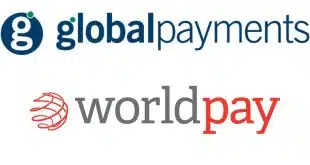Startup Paydiant Inc. on Thursday scored a major coup with the announcement that it has signed the sprawling Subway chain of sandwich stores to use its white-label mobile-payments app.
n
The deployment, which is expected to start later this year, is being characterized by both companies as a national rollout rather than a pilot. Paydiant’s Chris Gardner, a co-founder of the Wellesley, Mass.-based company, refers deployment questions to Subway, which refuses to comment beyond the companies’ joint press release. The Milford, Conn.-based chain claims 40,000 stores worldwide, with about 27,000 in the United States. The release calls the chain the “world’s largest restaurant brand.”
n
“It’s a major deal—they should be opening the champagne bottles [at Paydiant],” says Arkady Fridman, who follows mobile payments for Aite Group LLC, Boston. “The reality is Subway is a major consumer brand.”
n
Indeed, it appears Subway’s decision catapults 3-year-old Paydiant into the front ranks of the nascent mobile-payments business, where merchants have struggled to identify winning partners among a bewildering array of startups and established players. “It’s the biggest retailer we’ve done business with to date, but there are a number of other whoppers we hope to announce in the coming months,” Gardner tells Digital Transactions News. “It’s really starting to move now.”
n
Mobile-payments ventures like Merchant Customer Exchange, which is controlled by major retailers, and Isis, a carrier-controlled company, have targeted national merchants like Subway. Indeed, the sandwich chain has been rumored to be in talks with Isis. But both Gardner and Fridman point out there’s nothing in the Paydiant installation that would preclude a deal with another wallet platform, should Subway choose. “We never in a million years request exclusivity from anybody,” says Gardner. “Exclusivity doesn’t make sense.”
n
Paydiant’s talks with Subway have been in progress for some time. “Over the years, we’ve reached up to them, and they’ve reached up to us for updates,” says Gardner. He says the size of the Subway installation, with its tens of thousands of locations, shouldn’t be an issue. “Obviously, there are integration challenges, but we’re super-confident we’ll deliver,” he says.
n
While Subway won’t discuss the deal, Fridman says the sandwich chain likely justified the tieup by looking to the data the mobile system will let them gather on their customers, who for the most part are unknown to store personnel. “I see this much less as a payments play than as solving the anonymity issue between Subway and its customers,” he says. “It enables a brand-new, rich data set.”
n
Paydiant’s app, which is usually branded by the merchant, works by letting consumers use a smart phone to read a QR code displayed on a merchant’s terminal or monitor. The code, which represents a transaction identifier, triggers the app to ask the user to select from among payment credentials stored on Paydiant servers. The company runs an offers-management platform and was set to launch a loyalty platform this month.
n
Paydiant has been on a roll lately. Last month, it closed a $15 million Series C round of funding, bringing to $35 million the sum of cash the company has raised altogether. It has secured about a dozen clients for its app, including processors Fidelity National Information Services (FIS) and Vantiv Inc., banks Bank of America Corp., Capital One Financial Services Corp., and Barclaycard, and merchants. Before Subway, the largest merchant client was the mid-Atlantic grocery chain Harris Teeter Inc., which is using the app in a pilot to allow customers to pay for groceries in a curbside pickup lane.
n
Paydiant charges a transaction fee in addition to a license fee based on the number of active users. Gardner won’t be specific about the transaction fee beyond calling it “small” and “some amount of pennies.”
Aite’s Fridman sees the signing of a merchant the size of Subway as propitious for mobile payments. “Getting large retailers to participate is what’s needed to drive proximity payments at the point of sale,” he says. “It helps drive consumer adoption [if you offer] acceptance at large retailers.”



